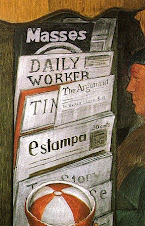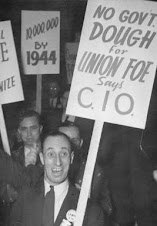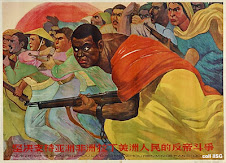By Martha Grevatt
Published Feb 26, 2010 7:49 PM
In 1933 St. Louis, Mo., was the gateway to the segregated South. Here was the last train stop before passengers were reassigned to cars marked “colored” and “white.” While the city did not have apartheid codes on the books, St. Louis itself was in every other way a Jim Crow town.
Yet there, in the worst year yet of a depression that had gone on for four years, African-American women who shelled pecans all day led a victorious strike.
Because pecans grew naturally along the Mississippi River, they were shipped by boat to St. Louis, making the city a center for the nut shelling industry.
In her book, “The Funsten Nut Strike,” Myrna Fichtenbaum describes the situation of the workers: “Seated at a table, after obtaining a 25 pound bag of nuts, the women separated the meat from the shells with a knife. Halves were placed in one pile, broken pieces in another. The shells were also kept, so that upon completion all of it could be weighed once more, making sure that it all added up to the original 25 pounds.”
Workers were paid by the pound. Black women got two cents for pieces and three or four cents for halves. White women, most of them Polish, received two cents more per pound. The workplaces were dusty and unsanitary, but better jobs were not available to women of color. Black women comprised about 85 percent to 90 percent of the work force in the pecan shops.
Starvation pay — an average of $1.80 per week for Black women and $2.75 for white women — meant that the owners of the Funsten Nut Company could earn a quarter of a million dollars in annual profit even during the Depression.
Overall unemployment and underemployment in St. Louis’ Black community stood at a staggering 75 percent — a hard economic environment in which to launch a strike, to say the least. By 1933, however, Black workers had acquired several years of class struggle experience specifically through the communist-led Unemployed Councils. It was a recent Black recruit to the Communist Party who first began talking strike with two members of his family who worked at Funsten. The Food Workers Industrial Union, affiliated with the Trade Union Unity League, began holding organizing meetings at the CP headquarters.
It was the women in the shops who developed the strike demands: equal pay for all, union recognition, and pay rates of 10 cents per pound for pecan halves and four cents for pieces. “We demand 10 and four” became the strike slogan. It was coined by Carrie Smith, a middle-aged Black woman described as “the heart and soul of the strike.”
On April 24, 1933, a committee of 12 walked into the office at Funsten’s west end plant — one of four in St. Louis. All but seven workers stopped working and waited outside the office for a report. A company executive told the committee he would get back to them at a later date.
Three weeks went by with no answer from management. On May 13 Carrie Smith addressed a mass meeting. “Girls, we can’t lose,” she implored, holding a brick in one hand and a Bible in the other. The meeting voted to strike. The next day the committee went back to the company office. Their demands were rejected. The walkout began at the west end plant, after which workers gave the signal to walk out at the main plant. A day later two more Funsten plants plus the Liberty Nut Company and the Central Pecan Company were strikebound. Altogether 1,400 workers hit the picket lines. While Black women led the strike, most of the white women joined in.
Picket duty began promptly at 5 a.m. Each plant had a shop committee that met every morning. Nightly strike meetings were held at the CP headquarters. A negotiating committee was established, as was a relief committee, which fed about 1,200 strikers three meals a day. Often the women battled scabs with bricks and bats. About 100 were arrested.
Several days into the strike a committee went into the city hall to demand the mayor intervene. On May 23 the central strike committee met — at the CP headquarters, no less — with Funsten management, their attorney, and a committee set up by the mayor. The agreement reached in this all-day session was eight cents for halves and the four cents for pieces that the women had demanded. All workers were to be paid equally!
This would have been a remarkable achievement under favorable strike conditions. Yet it took place in the first half of 1933. The National Recovery Act, with a Section 7(a) that on paper gave workers the right to organize, had not even been passed!
These heroic workers inspired others. Ralph Shaw, leader of the city’s CP branch, recalled, “This initial example by the most oppressed nut workers had a tremendous effect in St. Louis in bringing forward the clothing workers and ladies’ garment workers after the NRA was passed. Some of our people from the Food Union spoke and were greeted at some of their strike meetings. There was a tremendous feeling of solidarity.”
The main source for this article, including quotes, is from the book “The Funsten Nut Strike” by Myrna Fichtenbaum.
E-mail: mgrevatt@workers.org
Articles copyright 1995-2010 Workers World. Verbatim copying and distribution of this entire article is permitted in any medium without royalty provided this notice is preserved.
Subscribe to:
Post Comments (Atom)










































No comments:
Post a Comment